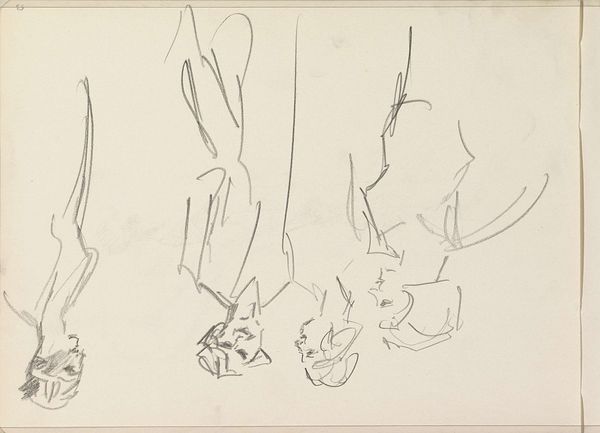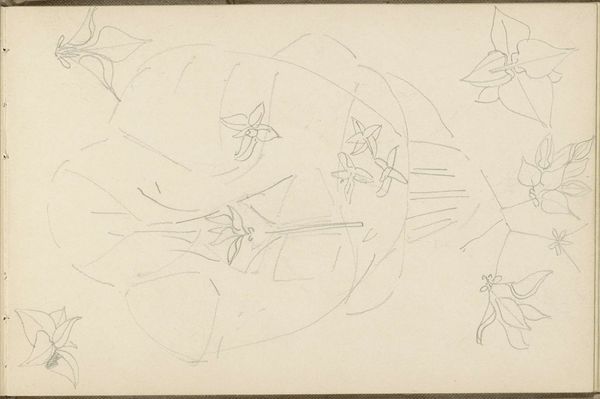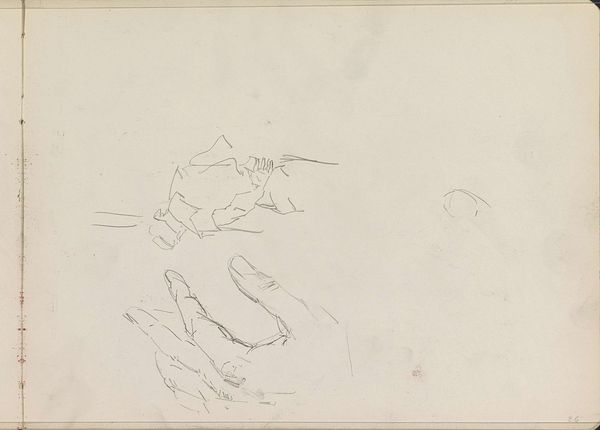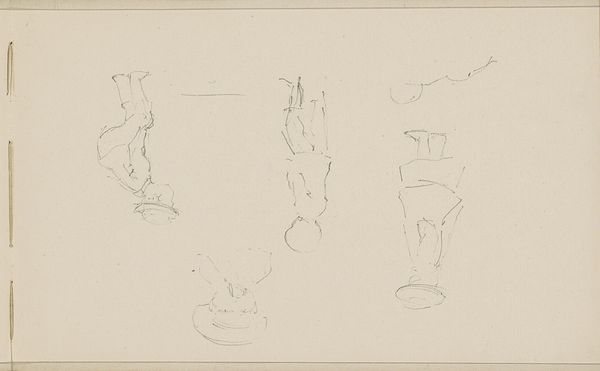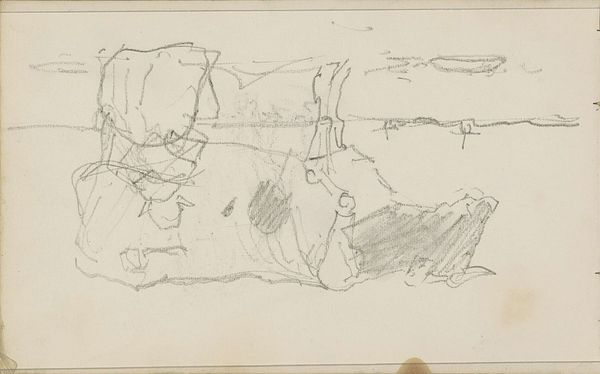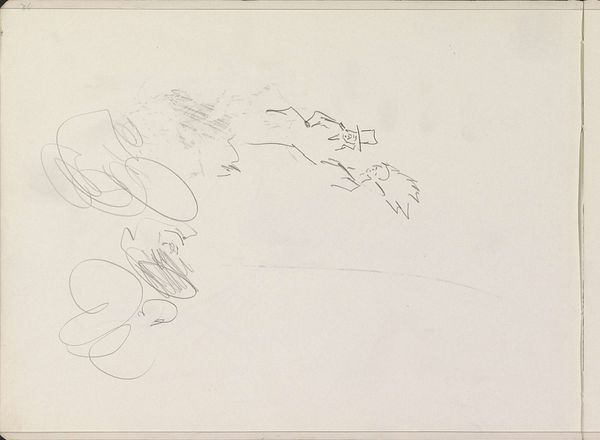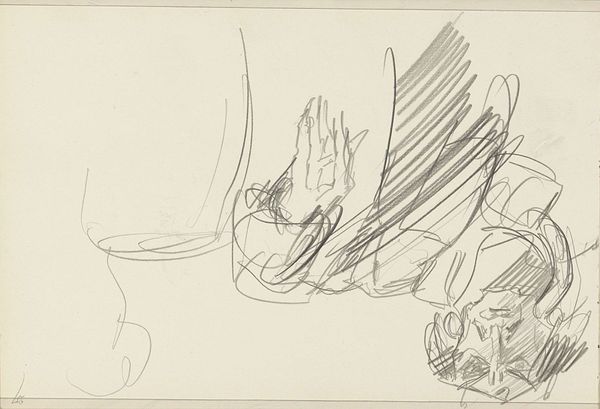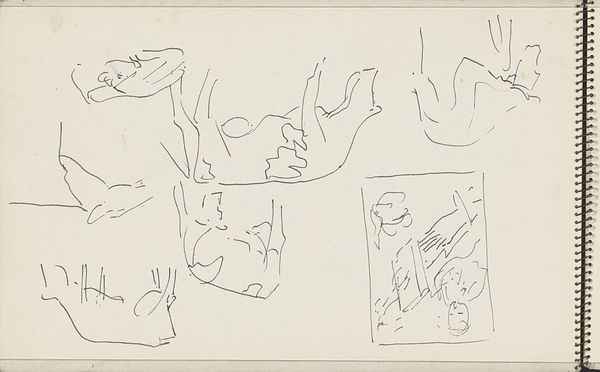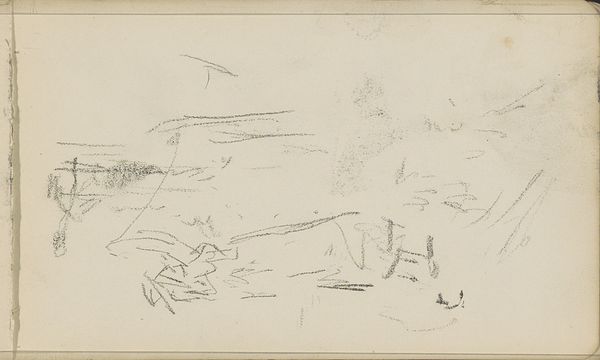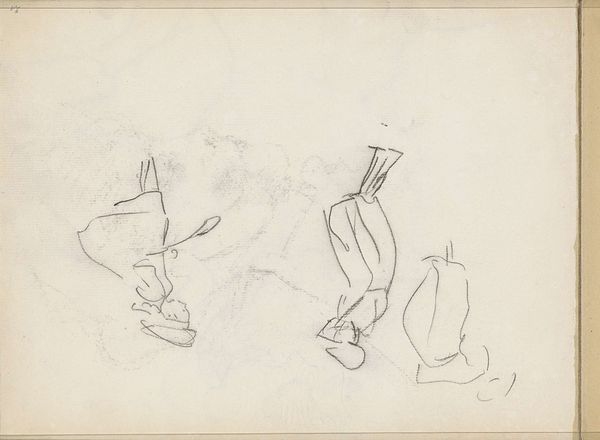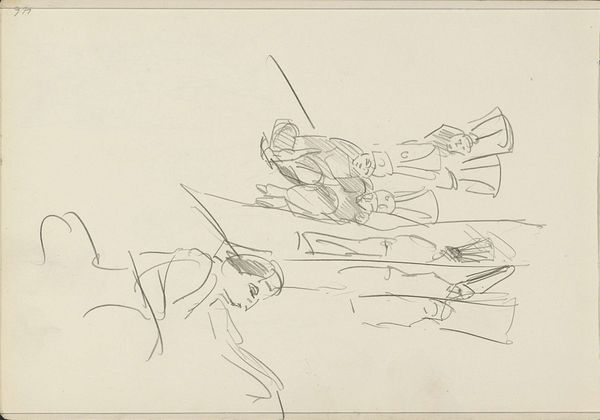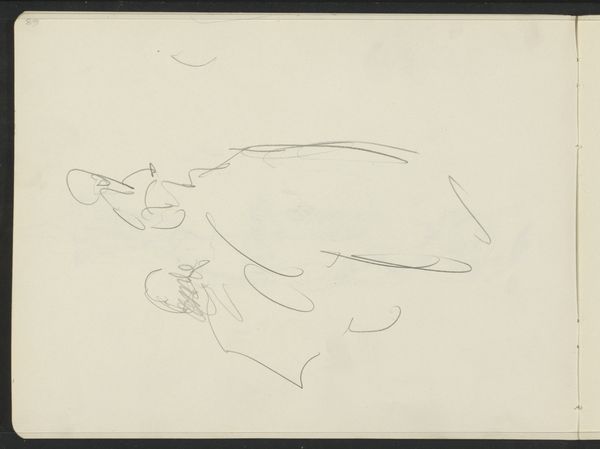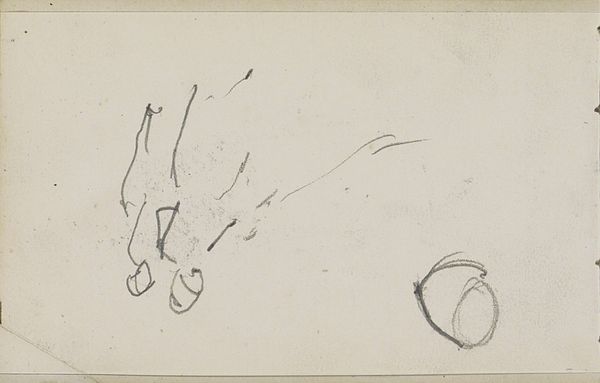
Copyright: Rijks Museum: Open Domain
Curator: Isaac Israels created this drawing, titled "Figuurstudies," sometime between 1875 and 1934. It's currently held at the Rijksmuseum. What are your initial thoughts on this sketch? Editor: It has a rather ghostly, ephemeral quality. The lightness of the pencil makes it feel like a fleeting moment captured on paper, like figures half-formed in memory. Curator: Indeed. These figure studies offer an intimate glimpse into Israels' working process. Sketches like these were crucial to Impressionist painters, a way to capture light and movement spontaneously, but what might these specific sketches communicate about cultural symbols for the time period, specifically regarding the subjects’ appearances? Editor: Considering the costume details and the quick, almost journalistic style, they could be sketches of figures seen in everyday life—perhaps in the theatre or a cafe. These aren’t idealized figures; they appear quite ordinary. This would provide snapshots of a period and the general perception and acceptance of various styles in society. These sketches immortalize a period. Curator: That aligns with Israels’ interest in portraying modern life and capturing informal scenes. His engagement with subjects on the margins of society also reflects changing social and political perspectives. His work certainly diverges from formal studio portraiture, wouldn't you say? Editor: Absolutely, this seems like an attempt to democratize imagery. What previously only the upper classes had access to, can now belong to the public through realistic figures, especially with pencil as the selected material here, something inexpensive and versatile in use. Curator: What do you mean, exactly, in this context of democratizing imagery? Editor: Consider this. During Israels' time, a new perception and approach was happening concerning visual depiction. Not only did it become a personal intimate act through the quick application and nature of materials, like the application and material selection in “Figuurstudies,” it represented the democratization of imagery within cultural memory. In the past, symbolic weight resided mainly in the careful and elaborate detail afforded to conventional depictions of royalty or important, well-off members of society and history. With these sketchbook figures of everyday life in these personal artworks, it opens up a new visual archive where everyday folks can now be considered. Curator: It's true, isn't it, that Israels’ sketches invite a different kind of engagement, one where the viewer is made aware of their place in the world and who can potentially be part of historical depictions in the present. He immortalizes reality. Thank you, this was enlightening. Editor: The pleasure was all mine.
Comments
No comments
Be the first to comment and join the conversation on the ultimate creative platform.
